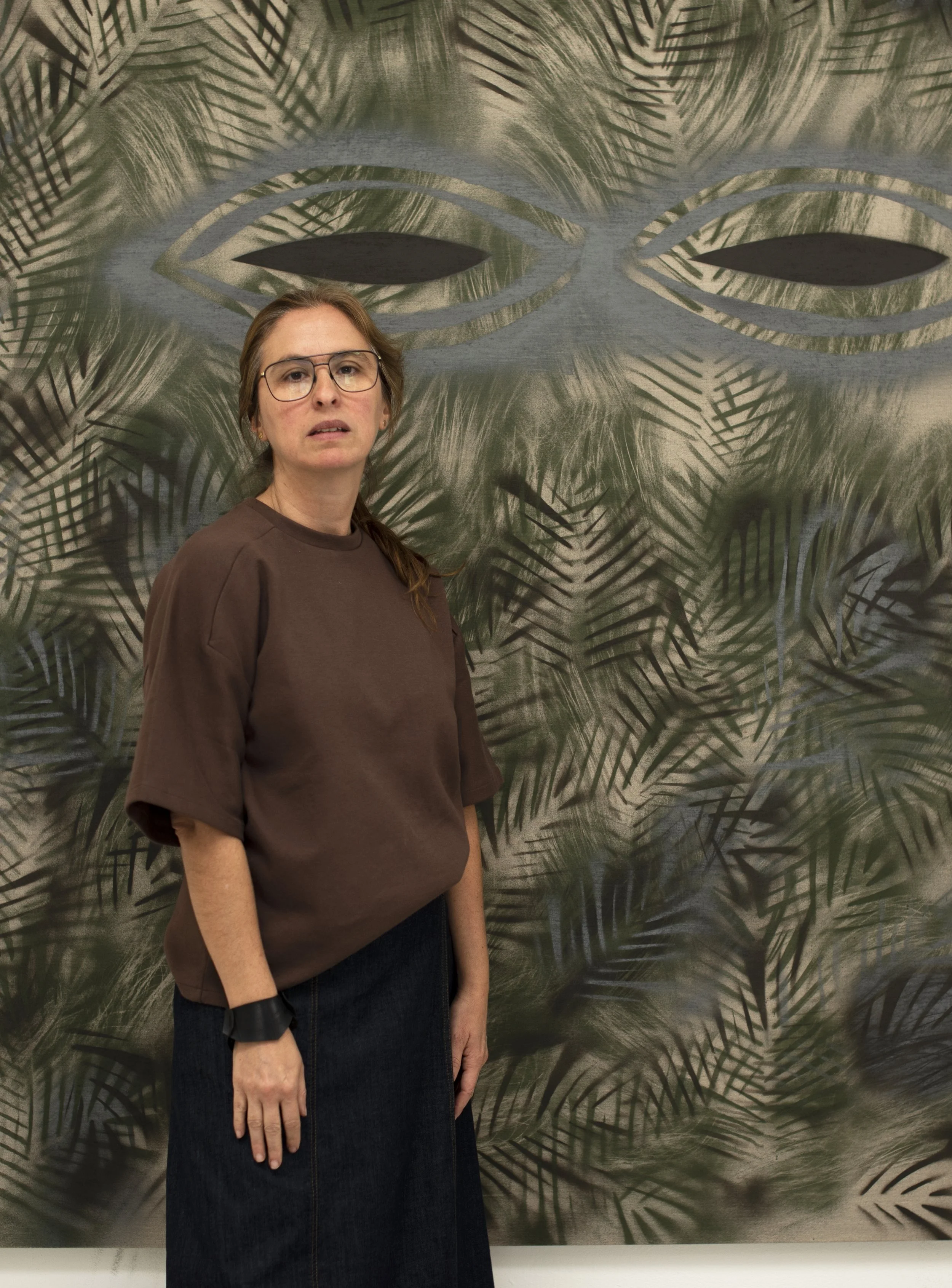Lucía Pizzani: Clay, Memory, and the Alchemy of Transformation
This interview is part of the series "In the Making: Conversations on Latin American Art in the UK".
Research, Interviews and Writing by Raquel Gonzalez Eizmendiz
Curatorial & Editorial Direction by Gabriela Román González & Mónica Núñez
Lucía Pizzani, photo by Jaime Gili
Lucía Pizzani’s art emerges from a deep dialogue with materiality, not just as content and shape, but as memory and meaning. Clay, photography, botanical textures, and ancestral echoes come together in her practice, which is both alchemical and rigorously grounded. Trained originally in ecology and journalism, Lucía approaches art with a researcher's eye and an ecologist’s intuition. “The materials matter,” she says. “They carry their own history. They age, they shift, and that is part of what gives the artwork its power.”
Although she began with photography, over the years Lucía has grown increasingly drawn to ceramics, a medium she has worked with for more than fifteen years. Her use of clay is neither nostalgic nor decorative; it is conceptual and tactile, informed by both ancestral knowledge and ecological urgency. “Some of the oldest human traces we have are ceramic fragments,” she reflects. “Clay does not disappear. It preserves.” For Lucía, matter is memory, and shaping it becomes an act of remembrance and transformation.
Exhibition view at Tropico Pasado, solo show at Galleria Doris Ghetta, Italy, 2025
Lucía’s connection to Venezuela remains essential. “For me it is a matter of nourishment. Inspiration and ideas often come through that interaction with cultures of Latin America where I’m from,” she says. After six years of absence during Venezuela’s most difficult period, she returned in 2022 and has since continued to exhibit, teach, and collaborate with local artists and makers. Her ceramic work, shown at Frieze London in 2024, was first developed in a residency on Margarita Island, in partnership with a community of ceramicists from El Cercado. “There is a tactile knowledge there. It is not just about the object, it is about continuing a cultural lineage.”
Living in the UK has brought both opportunity and dissonance. Lucía speaks candidly about the cultural distance she felt upon arriving in London. “This city is multicultural, yes, but English culture can be insular. There is a difference between being invited from abroad for a residency or project and actually living here.” As she notes, Latin America remains somewhat unknown in many UK contexts, requiring artists to provide context for their artworks.
Acorazada at the exhibition Planet B, Climate Change and the new sublime, curated by Nicolas Bourriaud, Venice, 2022. Installation, wallpaper, collage and ceramics
Lucía understands her work as a continuous negotiation between place, material, and experience. Her feminism is embodied and intuitive; her politics emerge through process. In a market increasingly interested in ecological themes, Lucía remains cautious. “These topics are not new to me. I was doing environmental work in the ’90s, outside of the art world context. What is happening now is urgent.”
Her installations are spaces of transformation, where clay whispers of resilience and photographs imprint lost botanicals like ghostly relics. At their core is a belief that matter holds memory and that through shaping it, we shape new ways of belonging.
Lucía Pizzani was born in Venezuela and lives and works in London. She holds a BA in Communications Studies, (Universidad Católica Andres Bello, Caracas), Certificate in Conservation Biology from CERC at Columbia University (New York) and Master in Fine Arts from the Chelsea College of Art and Design (London). Her expressive practice involves the body and self always informed by materiality. One of her core concerns is the interrelationship between narratives of women in history and processes of metamorphosis in the natural world. She works across a variety of media - including photography, ceramics, videos, drawings, performances and installations. Having worked as part of the environmental movement in Venezuela for many years, she has always incorporated ecological elements into her artwork.
Her work has been incorporated to the TATE Collection and Magasin3 Museum of Contemporary Art (Stockholm). It is also part of the Essex Collection for Art from Latin America ESCALA, Colección Patricia Phelps de Cisneros (CPPC), Catherine Petitgas Collection, Archivo Fotografía Urbana, Fundación Eugenio Mendoza, Colección Juan Yarur and Museum Of Latin American Art (MOLAA) among other private and public collections.




